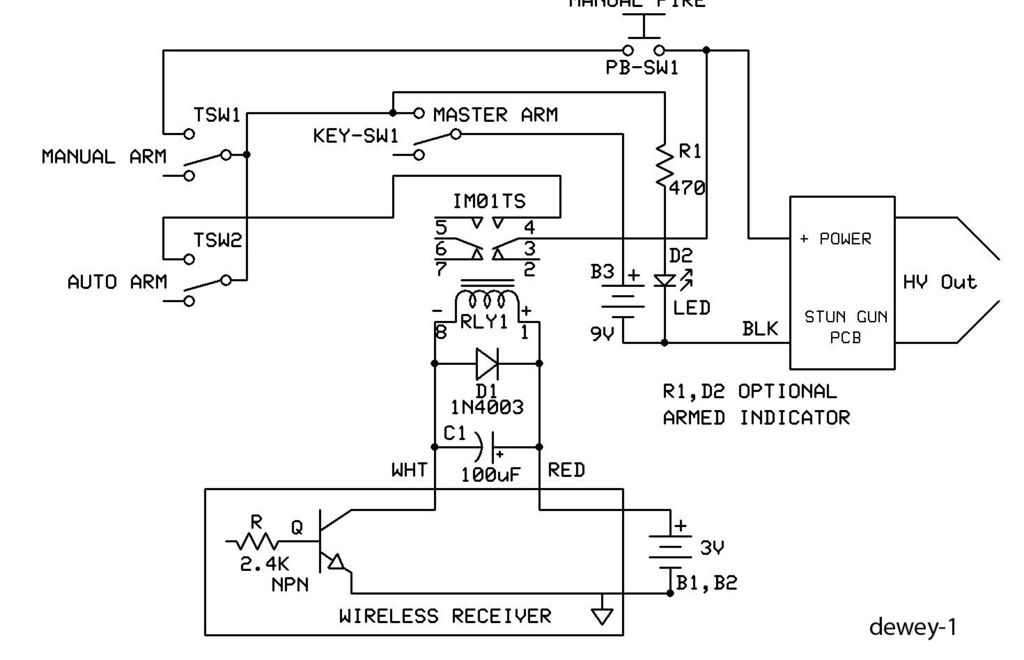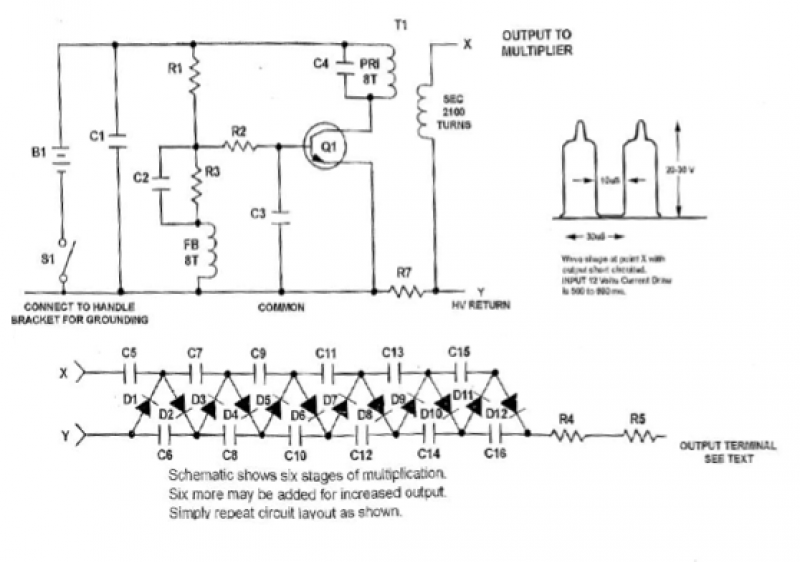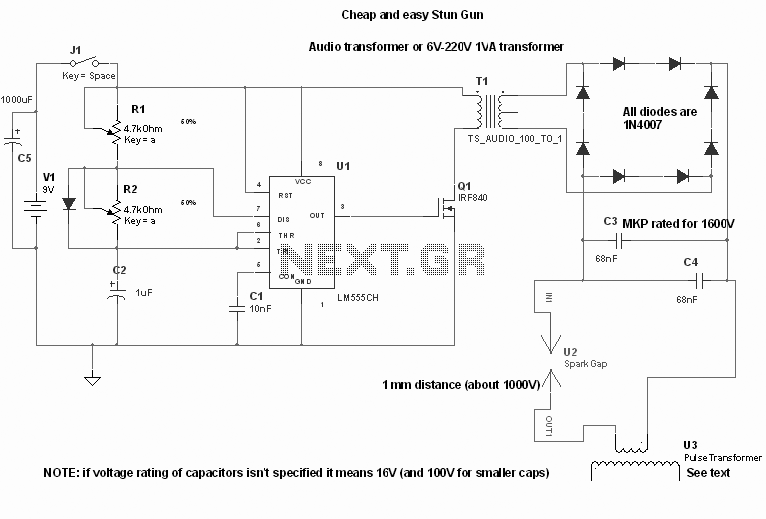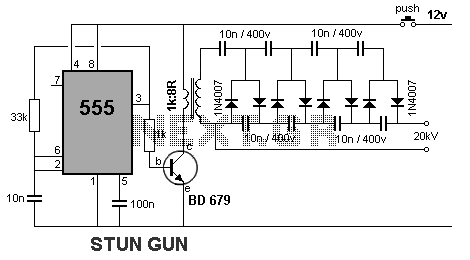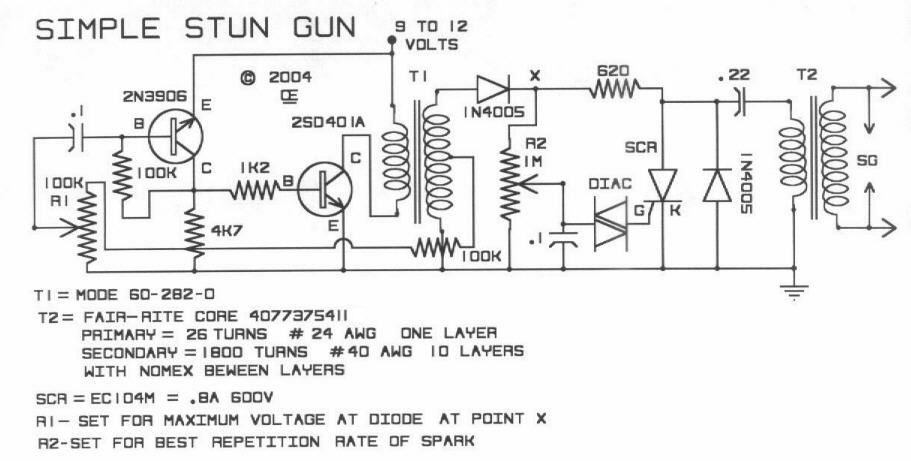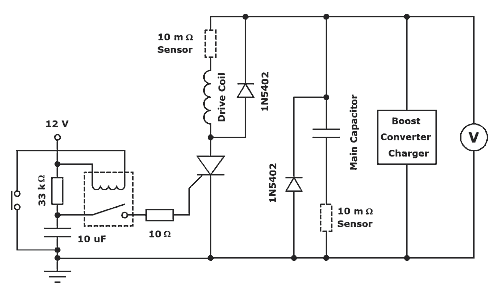
Siren-space war-phasor gun
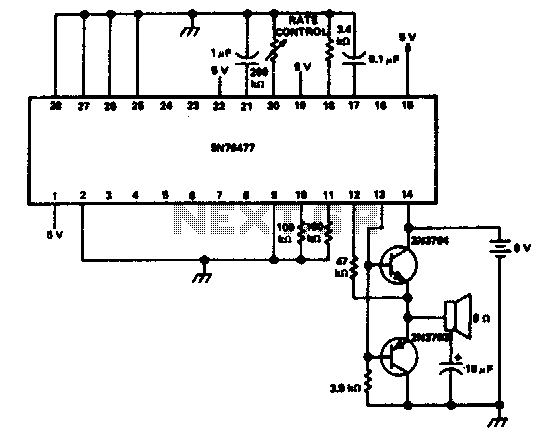
The one-shot and decay functions could be added to create an ideal phasor gun sound.
To design a circuit that generates a phasor gun sound using one-shot and decay functions, the following components and configuration can be utilized. The one-shot function can be implemented using a monostable multivibrator, such as the 555 timer in monostable mode. This component will be triggered by a pulse, generating a single output pulse of a specified duration. The duration can be adjusted by selecting appropriate resistor and capacitor values according to the formula T = 1.1 * R * C, where T is the output pulse width.
To create the decay effect, a low-pass filter can be employed, which will smooth out the output pulse from the one-shot circuit. This can be achieved using an RC (resistor-capacitor) network. The cutoff frequency of the filter can be set to allow for a gradual decline of the sound wave, contributing to the desired decay effect.
The output from the low-pass filter can then be fed into an audio amplifier circuit to drive a speaker, producing the final phasor gun sound. The amplifier should be chosen based on the required output power and impedance of the speaker. Additionally, a waveform generator can be used to shape the sound further, allowing for modulation of frequency and amplitude to add complexity to the sound profile.
To summarize, the circuit will consist of a 555 timer configured in monostable mode for the one-shot function, followed by an RC low-pass filter for the decay effect, and an audio amplifier to drive the speaker. This configuration will successfully generate the intended phasor gun sound.The one shot and decay functions could be added to make an ideal phasor gun sound. 🔗 External reference
To design a circuit that generates a phasor gun sound using one-shot and decay functions, the following components and configuration can be utilized. The one-shot function can be implemented using a monostable multivibrator, such as the 555 timer in monostable mode. This component will be triggered by a pulse, generating a single output pulse of a specified duration. The duration can be adjusted by selecting appropriate resistor and capacitor values according to the formula T = 1.1 * R * C, where T is the output pulse width.
To create the decay effect, a low-pass filter can be employed, which will smooth out the output pulse from the one-shot circuit. This can be achieved using an RC (resistor-capacitor) network. The cutoff frequency of the filter can be set to allow for a gradual decline of the sound wave, contributing to the desired decay effect.
The output from the low-pass filter can then be fed into an audio amplifier circuit to drive a speaker, producing the final phasor gun sound. The amplifier should be chosen based on the required output power and impedance of the speaker. Additionally, a waveform generator can be used to shape the sound further, allowing for modulation of frequency and amplitude to add complexity to the sound profile.
To summarize, the circuit will consist of a 555 timer configured in monostable mode for the one-shot function, followed by an RC low-pass filter for the decay effect, and an audio amplifier to drive the speaker. This configuration will successfully generate the intended phasor gun sound.The one shot and decay functions could be added to make an ideal phasor gun sound. 🔗 External reference
